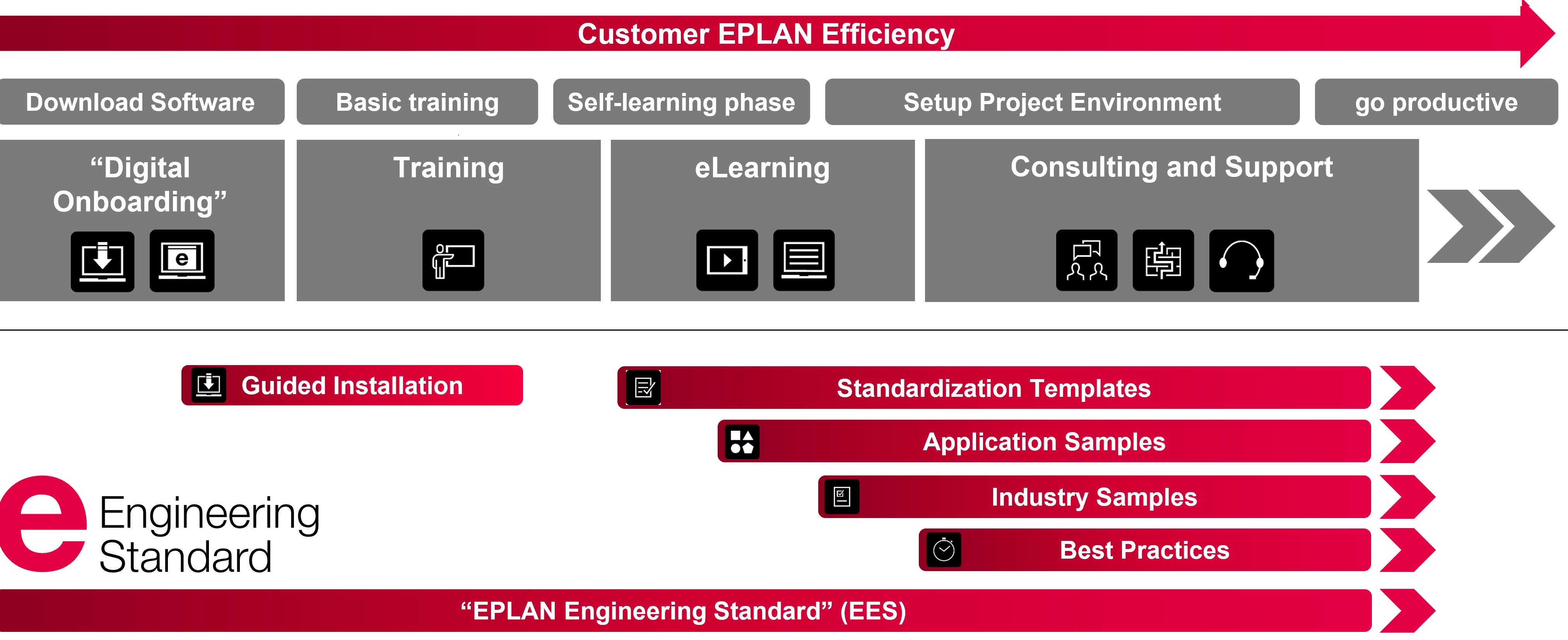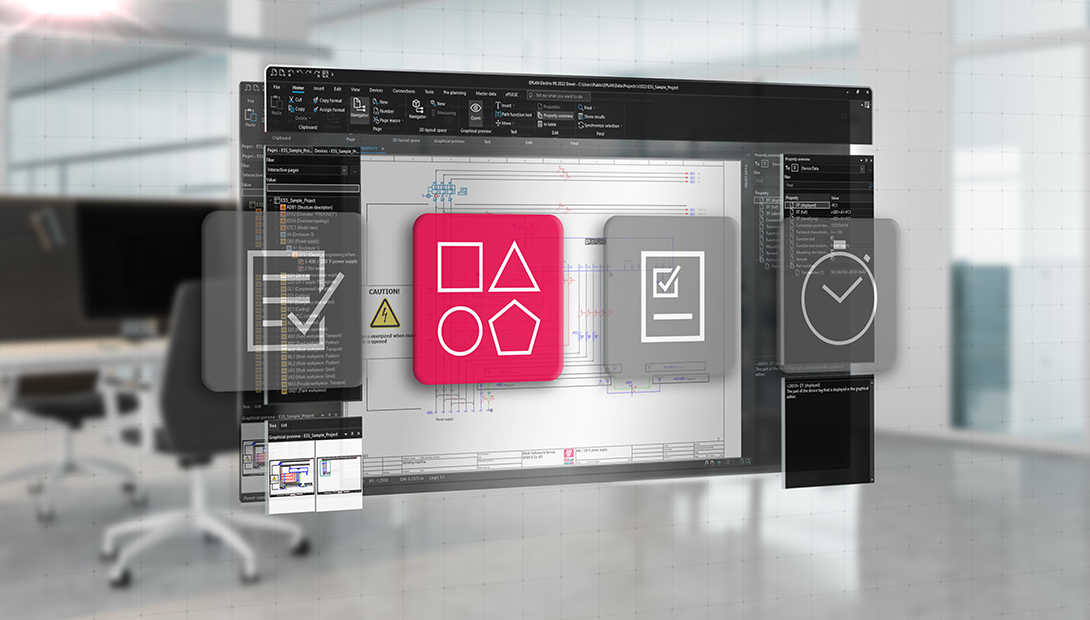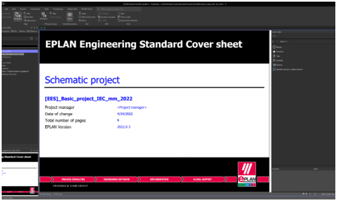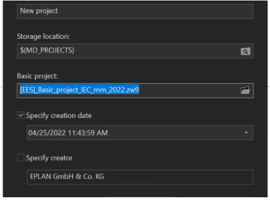Author
 Nigel Grant
Nigel has been working at EPLAN UK for almost 3 years as an Applications Engineer. His main tasks include installing the EPLAN software, giving live demos to prospects and customers and training customers on best practices for using the software. He has previously worked as an Electrical Engineer and a Project Engineer, both of which have driven his passion for helping companies become more efficient and driving their engineering to the next level. Nigel's experience in panel wiring, electrical engineering and project work has given him a well-rounded view of the industry. This enables him to offer customers the best solutions for their processes.
grant.n@eplan.co.uk
Nigel Grant
Nigel has been working at EPLAN UK for almost 3 years as an Applications Engineer. His main tasks include installing the EPLAN software, giving live demos to prospects and customers and training customers on best practices for using the software. He has previously worked as an Electrical Engineer and a Project Engineer, both of which have driven his passion for helping companies become more efficient and driving their engineering to the next level. Nigel's experience in panel wiring, electrical engineering and project work has given him a well-rounded view of the industry. This enables him to offer customers the best solutions for their processes.
grant.n@eplan.co.uk
Support, templates and examples for efficient electrical design
The new generation of software from EPLAN, EPLAN Platform 2023, is here! The update offers further support for different engineering disciplines through its extensive new features such as the new international macro management, high-performance 3D engine and EPLAN eSTOCK, the comprehensive device management system. Despite these new innovations, users do not have to be afraid of possible complexity, as the EPLAN Engineering Standard will support them right from the start.
Tom Wolff, Head of EPLAN Engineering Standard reveals, "We provide our customers with practical assistance that is based on standardised data and processes, to enable efficient usage of our software,". In an interview with the standardisation expert, Tom further explains what is behind the new service.

"Users not only get a strong software solution for electrical design, but they also benefit from additional services that really simply support them in their daily work."
Tom Wolff, Head of EPLAN Engineering Standard
Interview: How the EPLAN Engineering Standard supports software installation and offers practical templates for electrical design
The new EPLAN Engineering Standard supports and accompanies users in all important areas of electrical design. But does that mean that the shared journey for users and EPLAN will continue even after the license has been made available?
Tom Wolff: Yes, that's one of the great added values for our software users. From now on, you will not be left alone with your new software, but will instead be supported by EPLAN right from the start – free of charge and on a voluntary basis, of course. This allows users to work much more efficiently with EPLAN right from the initial download and also save valuable time during configuration and application.
Sounds interesting, can you describe the services in more detail? What support can (new) users expect?
Tom Wolff: Gladly. Typically we get asked the following questions: "Do I really have to start from scratch?" or "Does EPLAN have a suggestion for this?". We can now confidently answer and support you from now on. As a rule, working in a standardised way also means working efficiently. This is especially true for software applications. The level of efficiency can be increased further if standardisation is implemented from the very beginning and then runs through the life of the software - i.e. from the installation, through the so-called self-learning phase, to productive use. With the EPLAN Engineering Standard, we are creating an initial, simple standardisation based on example data and templates. For example, this includes guidelines for the correct installation of the EPLAN platform, standardised basic or macro project templates, configuration examples for typical tasks, and industry-specific best practices. Beginners and experienced users can benefit equally from the data and templates. All users not only get a strong software solution for electrical design but also benefit from additional services that really support their daily work.
 Schematic representation of an exemplary customer journey: With the EPLAN Engineering Standard, users are continuously supported in all work phases with data and templates.
Schematic representation of an exemplary customer journey: With the EPLAN Engineering Standard, users are continuously supported in all work phases with data and templates.
The EPLAN Engineering Standard starts with the correct installation of EPLAN? Why is that so important?
Tom Wolff: The correct installation not only saves time but is also necessary for the best possible later application. By downloading and creating an EPLAN ID, users lay the foundation for maximum efficiency in future activities. In order to ensure a quick and smooth installation of the software, we have developed a Guided Installation guide. This document not only describes the most important steps for different installation types such as initial or update installation, but also defines the standardised configuration for platform entry. This allows users to become productive much faster as they receive first-hand tips and information from EPLAN. The whole thing is illustrated with how-to videos and is centrally available online at EPLAN.com.
Does the EPLAN Engineering Standard only include the Guided Installation?
Tom Wolff: No, in fact, it gets really interesting for users after the guided installation! Ultimately, EPLAN users choose our software so that it makes their everyday engineering work easier and better. And this is exactly where we can provide even more targeted support with the EPLAN Engineering Standard. For example, we offer a wide range of practical standard templates and examples that electrical designers can download and use immediately. Based on real-life EPLAN projects, our practical standard templates and examples are easy to understand and follow, and you can rely on top-quality data as they are based on the know-how of our professional services team. From practice, for practice.

With the EPLAN Engineering Standard, users can download templates, application samples, and best practices and use them immediately in their everyday work.
Can you give a concrete example of an engineering template that can be used directly in practice?
Tom Wolff: Of course. Users will find practical basic projects with which they can immediately create their own circuit diagrams according to current standards. The standardised templates can be used internationally: both the European IEC standard and the NFPA standard for the North American market are supported and made available. The difference lies, for example, in the default unit of measure millimeters or inches. The templates are already provided with predefined structure identifiers, evaluations, and settings based on IEC 81346. This makes it much easier to create new projects more efficiently by hand. We have already received positive feedback for this and the template for basic projects has already been downloaded hundreds of times! Furthermore, if something doesn't fit or you don't like it a hundred percent, no problem, our consulting team provides support and responds to the individual needs of our software users. True to the motto: "What doesn't fit will be made to fit!".
|
|
|
The engineering standard includes, for example, basic projects based on the IEC and NFPA standards that support the creation of new projects.
I would like to take this opportunity to emphasise one thing: We always welcome feedback from users of our software and the EPLAN Engineering Standard! We welcome suggestions, for example by e-mail: engineeringstandard@EPLAN.de
Thanks for the standardisation insights, Tom! After registering, you can find more about the EPLAN Engineering Standard and downloads here:





Comments